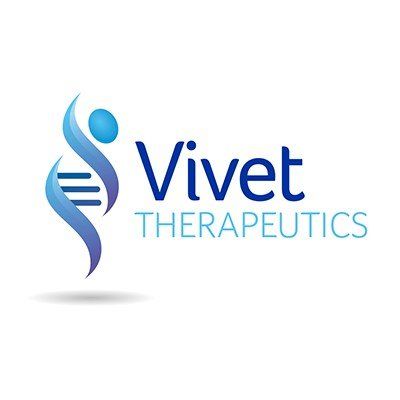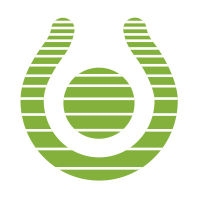预约演示
更新于:2025-05-07
ASS
更新于:2025-05-07
基本信息
别名 Argininosuccinate synthase、argininosuccinate synthase 1、ASS + [3] |
简介 One of the enzymes of the urea cycle, the metabolic pathway transforming neurotoxic amonia produced by protein catabolism into inocuous urea in the liver of ureotelic animals. Catalyzes the formation of arginosuccinate from aspartate, citrulline and ATP and together with ASL it is responsible for the biosynthesis of arginine in most body tissues. |
关联
4
项与 ASS 相关的药物靶点 |
作用机制 ASS抑制剂 |
在研机构 |
原研机构 |
在研适应症 |
非在研适应症- |
最高研发阶段临床申请批准 |
首次获批国家/地区- |
首次获批日期1800-01-20 |
靶点 |
作用机制 ASS抑制剂 |
在研机构 |
非在研适应症- |
最高研发阶段临床前 |
首次获批国家/地区- |
首次获批日期1800-01-20 |
靶点 |
作用机制 ASS抑制剂 |
在研机构 |
原研机构 |
在研适应症 |
非在研适应症- |
最高研发阶段临床前 |
首次获批国家/地区- |
首次获批日期1800-01-20 |
100 项与 ASS 相关的临床结果
登录后查看更多信息
100 项与 ASS 相关的转化医学
登录后查看更多信息
0 项与 ASS 相关的专利(医药)
登录后查看更多信息
1,006
项与 ASS 相关的文献(医药)2025-05-01·Pathology - Research and Practice
Role of genetic factors in imatinib resistance of chronic myeloid leukemia: P53, RB1, ASS1 gene deletions, and chromosome 8 hyperdiploidy
Article
作者: Aliyeva, Gunay ; Shirinova, Aytan ; Hasanova, Aypara ; Alimirzoyeva, Zohra ; Asadov, Chingiz
2025-04-01·Clinical Cancer Research
BCL-XL Protects ASS1-Deficient Cancers from Arginine Starvation–Induced Apoptosis
Article
作者: Panda, Prashanta Kumar ; Chen, Ethan Yang ; Dehner, Carina ; Ehrhardt, William ; Brashears, Caitlyn B. ; Paschoalini Mafra, Ana Carolina ; Benedict-Hamilton, Heather M. ; Cao, Li ; Oyama, Toshinao ; Bastos, Alliny C.S. ; Rogers, Leonard C. ; Bomalaski, John ; Serra Bonet, Maria ; Van Tine, Brian A.
2025-04-01·Stress and Health
Acute Stress Disorder in Israeli Civilians in Reaction to the 7 October War
Article
作者: Sowan, Wafaa ; Baziliansky, Svetlana
21
项与 ASS 相关的新闻(医药)2025-04-27
·学术经纬
免疫系统能够通过代谢重编程灵活应对内外环境的压力与刺激。巨噬细胞作为天然免疫系统的重要组成部分,在执行免疫功能时高度依赖特定的代谢重编程。尽管越来越多的研究提示某些代谢改变可能会影响巨噬细胞的功能,但巨噬细胞如何选择和重编程关键的代谢反应,以及其如何感知这些代谢变化以响应环境压力刺激,对此我们仍然知之甚少。近日,清华大学生命科学学院江鹏研究组在《自然-微生物学》(Nature Microbiology)期刊发表研究论文,揭示了巨噬细胞通过代谢重塑天冬氨酸-精氨基代琥珀酸支路,产生延胡索酸从而抵御病毒的机制。此前,江鹏研究组发现了尿素循环代谢异常决定肿瘤和巨噬细胞的命运,并系统研究了TCA cycle代谢在抗肿瘤和免疫调控中的作用。在该项研究中,研究人员发现,病毒感染早期可促使巨噬细胞中的尿素循环与三羧酸(TCA)循环发生协同重编程,形成一个闭环的代谢通路,称为天冬氨酸–精氨基代琥珀酸(Aspartate–Argininosuccinate, AAS)旁路。研究通过RNA测序、非靶向代谢组学分析和同位素示踪等手段,证实该旁路由胞质中的精氨基代琥珀酸合成酶(ASS1)驱动,进而促进延胡索酸(fumarate)生成,并增强炎症信号传导。功能实验表明,敲除ASS1会显著降低细胞内延胡索酸水平,抑制干扰素-β(IFN-β)的表达,并削弱线粒体呼吸功能。▲病毒感染诱导的代谢重编程合成延胡索酸提高抗病毒天然免疫反应(图片来源:原始论文[1])更为关键的是,病毒感染或外源性补充延胡索酸酯可通过促进线粒体抗病毒信号蛋白(MAVS)琥珀酸化,激活视黄酸诱导基因-I样受体(RIG-I-like receptor)信号通路,从而增强IFN-β的表达。这一机制不仅在囊泡性口炎病毒(VSV)感染模型中得到验证,也同样适用于仙台病毒和甲型流感病毒等其他病毒感染。此外,感染埃博拉病毒病患者的单核细胞呈现ASS1表达上调。ASS1缺失的小鼠在VSV感染后则显现出干扰素应答受损的表型。该研究揭示了早期病毒感染诱导的由ASS1驱动的AAS旁路是巨噬细胞中延胡索酸的重要来源,明确了其在调控抗病毒先天免疫中的关键作用,为代谢干预调节免疫功能提供了潜在靶点。清华大学生命学院夏文君博士后、毛优翔博士后和2023级博士研究生夏子言为共同第一作者,江鹏副教授为通讯作者。来源:清华大学原始论文:[1] Xia, W., Mao, Y., Xia, Z. et al. Metabolic remodelling produces fumarate via the aspartate–argininosuccinate shunt in macrophages as an antiviral defence. Nat Microbiol (2025). https://doi.org/10.1038/s41564-025-01985-x免责声明:本文仅作信息交流之目的,文中观点不代表药明康德立场,亦不代表药明康德支持或反对文中观点。本文也不是治疗方案推荐。如需获得治疗方案指导,请前往正规医院就诊。更多推荐点个“在看”再走吧~
2025-04-20
买科研服务(代计算、代测试、超算机时),送老李校长“科研理工男士情感课”第一性原理计算解决50年悬而未决难题:半导体中铜为何扩散更快?Ab initio及第一性原理入门参考书介绍《海贼王》告诉你,做科研为什么不能闭门造车……985博导亲测:用DeepSeek写国自然本子,3天完成30天工作量来自公众号:小柯生命本文以传播知识为目的,如有侵权请后台联系我们,我们将在第一时间删除。免疫系统能够通过代谢重编程灵活应对内外环境的压力与刺激。巨噬细胞作为天然免疫系统的重要组成部分,在执行免疫功能时高度依赖特定的代谢重编程。尽管越来越多的研究提示某些代谢改变可能会影响巨噬细胞的功能,但巨噬细胞如何选择和重编程关键的代谢反应,以及其如何感知这些代谢变化以响应环境压力刺激,对此我们仍然知之甚少。北京时间2025年4月18日17时,清华大学江鹏团队在《自然—微生物学》(Nature Microbiology)期刊发表题为“巨噬细胞代谢重塑天冬氨酸-精氨基代琥珀酸支路产生延胡索酸以抵御病毒”(Metabolic remodelling produces fumarate via the aspartate–argininosuccinate shunt in macrophages as an antiviral defence)的研究论文。此前,江鹏研究组发现了尿素循环代谢异常决定肿瘤和巨噬细胞的命运(Nature, 2019; Mol Cell, 2022),并系统研究了TCA cycle代谢在抗肿瘤和免疫调控中的作用 (Cell Metab, 2023; Nat Chem Biol, 2022)。在该项研究中,研究人员发现,病毒感染早期可促使巨噬细胞中的尿素循环与三羧酸(TCA)循环发生协同重编程,形成一个闭环的代谢通路,称为天冬氨酸–精氨基代琥珀酸(Aspartate–Argininosuccinate, AAS)旁路。研究通过RNA测序、非靶向代谢组学分析和同位素示踪等手段,证实该旁路由胞质中的精氨基代琥珀酸合成酶(ASS1)驱动,进而促进延胡索酸(fumarate)生成,并增强炎症信号传导。功能实验表明,敲除ASS1会显著降低细胞内延胡索酸水平,抑制干扰素-β(IFN-β)的表达,并削弱线粒体呼吸功能。更为关键的是,病毒感染或外源性补充延胡索酸酯可通过促进线粒体抗病毒信号蛋白(MAVS)琥珀酸化,激活视黄酸诱导基因-I样受体(RIG-I-like receptor)信号通路,从而增强IFN-β的表达。这一机制不仅在囊泡性口炎病毒(VSV)感染模型中得到验证,也同样适用于仙台病毒和甲型流感病毒等其他病毒感染。此外,感染埃博拉病毒病患者的单核细胞呈现ASS1表达上调。巨噬细胞ASS1缺失的小鼠在VSV感染后则显现出干扰素应答受损的表型。该研究揭示了早期病毒感染诱导的由ASS1驱动的AAS旁路是巨噬细胞中延胡索酸的重要来源,明确了其在调控抗病毒先天免疫中的关键作用,为代谢干预调节免疫功能提供了潜在靶点。图1.病毒感染诱导的代谢重编程合成延胡索酸提高抗病毒天然免疫反应。清华大学生命学院博士后夏文君、毛优翔和2023级博士研究生夏子言为共同第一作者,江鹏副教授为通讯作者。此外,本研究也得到了王海峰副教授(清华大学)、程功教授(清华大学)、张从刚副教授(清华大学)、游富平研究员(北京大学)的大力支持。本项目获得了国家自然科学基金、清华-北大生命科学联合中心和博士后科学基金的经费支持,以及清华大学动物中心、代谢平台和流式分选平台的大力支持。相关论文信息:https://doi.org/10.1038/s41564-025-01985-x编辑 | 余 荷排版 | 王大雪
2025-04-19
·生物世界
编辑丨王多鱼排版丨水成文免疫系统能够通过代谢重编程灵活应对内外环境的压力与刺激。巨噬细胞作为天然免疫系统的重要组成部分,在执行免疫功能时高度依赖特定的代谢重编程。尽管越来越多的研究提示某些代谢改变可能会影响巨噬细胞的功能,尽管最近发现某些代谢途径的改变可影响巨噬细胞的功能,但代谢重塑的实现和调节机制(决定巨噬细胞的干扰素应答)在很大程度上仍未探索。2025 年 4 月 18 日,清华大学江鹏团队在 Nature Microbiology 期刊发表了题为:Metabolic remodelling produces fumarate via the aspartate–argininosuccinate shunt in macrophages as an antiviral defence 的研究论文。巨噬细胞在应对各种刺激时发挥效应功能的基础是代谢重塑,但其中涉及的机制尚不清楚。在这项最新研究中,研究团队发现,病毒感染引发的炎症刺激会导致巨噬细胞中的尿素循环和三羧酸循环代谢发生协同重编程,从而形成一个被称为天冬氨酸–精氨基代琥珀酸(Aspartate–Argininosuccinate,AAS)旁路的闭环代谢通路。通过 RNA 测序、无偏代谢组学和稳定同位素示踪,研究团队发现,该旁路由胞质中的精氨基代琥珀酸合成酶(ASS1)驱动,进而促进延胡索酸(fumarate)生成,并增强炎症信号传导。进一步功能实验表明,敲除 ASS1 会显著降低细胞内延胡索酸水平,抑制干扰素-β(IFN-β)的表达,并削弱线粒体呼吸功能。值得注意的是,病毒感染或外源性补充延胡索酸酯可通过促进线粒体抗病毒信号蛋白(MAVS)琥珀酸化,激活视黄酸诱导基因-I样受体(RIG-I-like receptor)信号通路,从而增强 IFN-β 的生成。除了水疱性口炎病毒(VSV)外,仙台病毒和甲型流感病毒也能产生这些作用。此外,感染埃博拉病毒的患者体内 ASS1 表达增加,而 ASS1 缺陷型小鼠在感染水疱性口炎病毒时,其巨噬细胞的干扰素反应受到抑制。总的来说,该研究揭示了早期病毒感染诱导的由 ASS1 驱动的 AAS 旁路是巨噬细胞中延胡索酸的重要来源,明确了其在调控抗病毒先天免疫中的关键作用,为代谢干预调节免疫功能提供了潜在靶点。病毒感染诱导的代谢重编程合成延胡索酸提高抗病毒天然免疫反应清华大学生命学院博士后夏文君、毛优翔和2023级博士研究生夏子言为论文共同第一作者,江鹏副教授为通讯作者。此外,该研究还得到了王海峰副教授(清华大学)、程功教授(清华大学)、张从刚副教授(清华大学)、游富平研究员(北京大学)的大力支持。论文链接:https://www.nature.com/articles/s41564-025-01985-x设置星标,不错过精彩推文开放转载欢迎转发到朋友圈和微信群 微信加群 为促进前沿研究的传播和交流,我们组建了多个专业交流群,长按下方二维码,即可添加小编微信进群,由于申请人数较多,添加微信时请备注:学校/专业/姓名,如果是PI/教授,还请注明。点在看,传递你的品味
疫苗信使RNA
分析
对领域进行一次全面的分析。
登录
或

生物医药百科问答
全新生物医药AI Agent 覆盖科研全链路,让突破性发现快人一步
立即开始免费试用!
智慧芽新药情报库是智慧芽专为生命科学人士构建的基于AI的创新药情报平台,助您全方位提升您的研发与决策效率。
立即开始数据试用!
智慧芽新药库数据也通过智慧芽数据服务平台,以API或者数据包形式对外开放,助您更加充分利用智慧芽新药情报信息。
生物序列数据库
生物药研发创新
免费使用
化学结构数据库
小分子化药研发创新
免费使用


